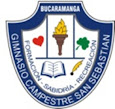 CARL FRIEDRICH GAUSS
CARL FRIEDRICH GAUSSAt the age of seven, Carl Friedrich Gauss started elementary school, and his potential was noticed almost immediately. His teacher, Büttner, and his assistant, Martin Bartels, were amazed when Gauss summed the integers from 1 to 100 instantly by spotting that the sum was 50 pairs of numbers each pair summing to 101.
In 1788 Gauss began his education at the Gymnasium with the help of Büttner and Bartels, where he learnt High German and Latin. After receiving a stipend from the Duke of Brunswick- Wolfenbüttel, Gauss entered Brunswick Collegium Carolinum in 1792. At the academy Gauss independently discovered Bode's law, the binomial theorem and the arithmetic- geometric mean, as well as the law of quadratic reciprocity and the prime number theorem.
In 1795 Gauss left Brunswick to study at Göttingen University. Gauss's teacher there was Kästner, whom Gauss often ridiculed. His only known friend amongst the students was Farkas Bolyai. They met in 1799 and corresponded with each other for many years.
Gauss left Göttingen in 1798 without a diploma, but by this time he had made one of his most important discoveries - the construction of a regular 17-gon by ruler and compasses This was the most major advance in this field since the time of Greek mathematics and was published as Section VII of Gauss's famous work, Disquisitiones Arithmeticae.
Gauss left Göttingen in 1798 without a diploma, but by this time he had made one of his most important discoveries - the construction of a regular 17-gon by ruler and compasses This was the most major advance in this field since the time of Greek mathematics and was published as Section VII of Gauss's famous work, Disquisitiones Arithmeticae.
Gauss returned to Brunswick where he received a degree in 1799. After the Duke of Brunswick had agreed to continue Gauss's stipend, he requested that Gauss submit a doctoral dissertation to the University of Helmstedt. He already knew Pfaff, who was chosen to be his advisor. Gauss's dissertation was a discussion of the fundamental theorem of algebra.
With his stipend to support him, Gauss did not need to find a job so devoted himself to research.
With his stipend to support him, Gauss did not need to find a job so devoted himself to research.


0 comentarios:
Publicar un comentario